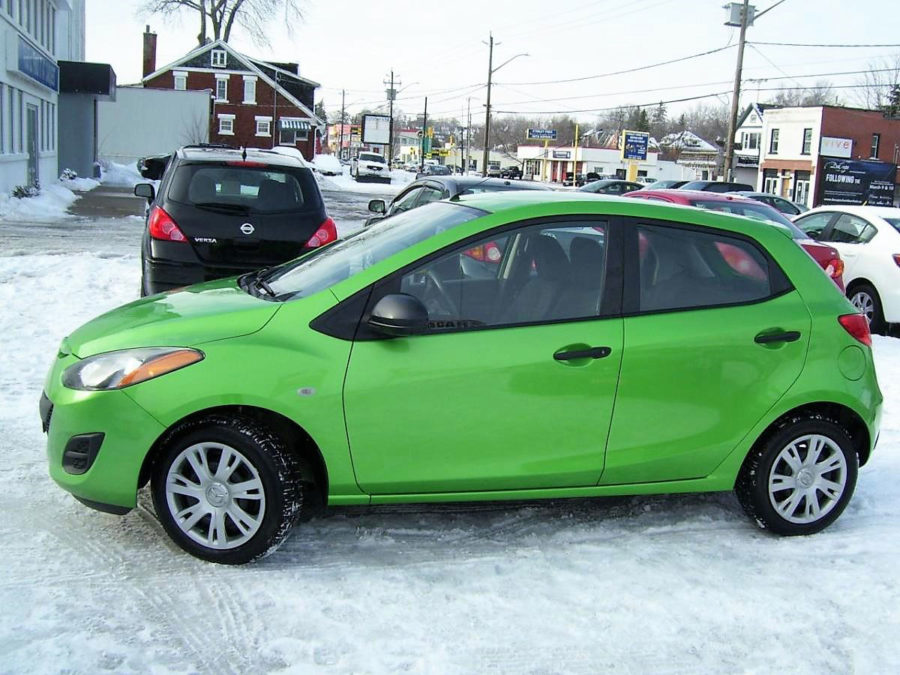Subcompact cars are priced to appeal to first-time car buyers and more mature drivers on a budget. These small hatchbacks and sedans have grown up a lot in the last decade to become surprisingly refined modes of transportation.
Most subcompacts focus on fuel economy, but a few will also satisfy enthusiastic drivers. These small cars are a big deal in cities like Toronto and Ottawa, where traffic can be challenging and parking is at a premium.
If you’re in the market for a used subcompact, here’s what to watch for in a few of the more popular models.
Ford Fiesta, 2011–2019
The European-inspired Ford Fiesta subcompact never graduated to a second generation in North America. Midway through the car’s run, Ford updated the Fiesta’s styling and added a turbo three-cylinder engine as an option. A Fiesta ST trim packed a turbo four-cylinder, more agile suspension and racing-style seats.

- The Fiesta’s optional automatic transmission is a dual-clutch design more common in sportier cars. Some owners were put off by unusual mechanical noises, which are actually normal. Ford did update the transmission’s software to address performance complaints, and issued a service bulletin regarding transmission fluid leaks.
- A Fiesta that won’t start, or whose transmission grinds or won’t shift into gear, might simply have a bad electrical ground connection.
- Early versions of Ford’s Sync infotainment system were buggy, so test its performance during your test drive.
Mazda2, 2011-2014
Mazda’s short-lived subcompact was a product of its now-defunct partnership with Ford. Mazda built the Mazda2 on a platform shared with the Fiesta.
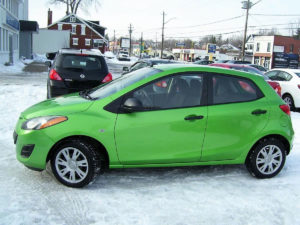
- Listen for a clunk from the steering at low speeds. A faulty intermediate steering shaft or a worn steering rack could cause this.
- Mazda suggests keeping the Mazda2 hatchback’s gas tank at least one-quarter full. This will help prevent fuel pump failure, which is a known issue with the car.
- A flashing airbag warning light is literally trying to tell you something. It flashes in code to indicate faults that could prevent the airbags from deploying in a crash.
- Other common complaints are front brake rotors that warp easily, and noisy air conditioning fans.
Chevrolet Sonic, 2012–2018
The Sonic has been around since the early part of this decade. Chevrolet has updated it during that time, but has not fully redesigned this subcompact. It offers a pleasantly solid driving feel, much like that of a larger car. If you do a lot of highway driving, the Sonic is a good vehicle to consider.
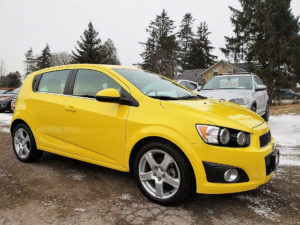
- The standard 1.8L engine is known for an oil-pressure sensor that allows oil to leak past it in cold weather. In the optional 1.4L turbo engine, leaky water pumps are a common flaw.
- A manual transmission that grinds when shifting from first to second at high engine speeds could need a shifter cable adjustment.
- Front suspension noises are commonly caused by worn sway bar end links. This is not a major safety concern and not overly expensive to repair, but it’s still best to replace them promptly.
Hyundai Accent and Kia Rio, 2012–2017
Despite their different names and styling, these cars share underpinnings and mechanical components. A 2012 redesign lent both cars a smooth powertrain, comfortable ride and more spacious interior. We prefer the Rio’s more substantial look.
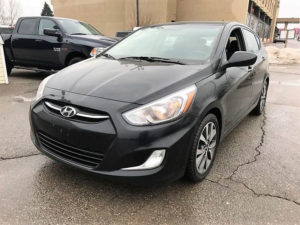
- Many owners say the brake pads and rotors installed at the factory are of poor quality and wear out quickly. When you replace the brakes on your Rio or Accent, don’t go for the cheapest option. Higher quality parts will perform better and last longer.
- Make sure the cruise control works properly. Some owners of cars with the automatic transmission say it sometimes doesn’t downshift to help hold speed on hills. In some cases, the fix was a software update to the cruise control system and/or the transmission.
- If the air conditioning seems weak, check the cabin air filter. A clogged filter is a common cause of poor cabin cooling. Some owners say the A/C is inadequate in very hot weather even when it’s working properly.
- The engine in the Accent and Rio uses direct fuel injection, conceived to improve performance and efficiency. However, it can also cause a build-up of deposits on the intake valves. Left unchecked, this can trigger a check engine light and lead to poor performance. A mechanic will clean the gunk off, but it’s not a do-it-yourself process.
- If you’re buying a Rio with the UVO infotainment system, spend some time using it while testing. Owners complain of system crashes and other quirks that make it annoying to live with. The fix often involves replacing the radio unit, which is expensive, so make sure it works well before you buy.
Honda Fit, 2009–2014
Honda rolled out the second-generation Fit in 2009, updating a car known for its spacious interior and thrifty fuel economy.
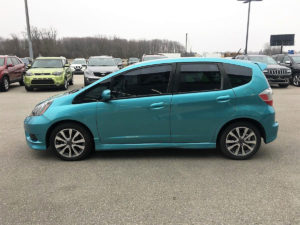
- Some owners complain of air conditioning that can’t keep the car cool in very hot weather.
- Another HVAC-related issue is a fan that only works on the highest speed setting. A failed electronic component called a resistor will have the fan working only on high. That is a cheap and easy fix, but Honda says the root cause may be a blower motor that draws too much current.
- Check the rear seat footwells for wet carpets. Poor rear-door seals on the Fit can let water into the car.
- Finally, if the trip computer’s fuel economy readout seems inaccurate, Honda can update the car’s fuel injection software.
Nissan Versa, 2014–2018
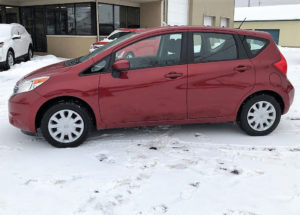
- Nissan redesigned its Versa into a second generation in 2012. That initial model was a sedan, and a Nissan followed up with a Versa Note hatchback in 2014. Both boast a spacious interior and an efficient engine, but performance is modest.
- Among the few potentially serious problems is something called piston slap. This occurs when the piston moves side to side in its cylinder. When it’s bad enough, you might hear a knocking sound from the engine, especially right after it is started cold. Nissan has replaced a small number of engines under warranty because of this.
- A certain amount of piston slap is okay, but extreme cases can cause the engine to consume oil. Check the oil level before you start the car; if it’s low, this could also be a sign of a neglected car.
- Piston slap is not a widespread concern, but worth listening for before you set out on a test drive. Issues like this demonstrate the importance of starting your test drive in a cold car. If the seller has warmed it up for you, they may have something to hide.
- Another potential issue is a faulty electronic throttle body. This is the prime suspect if the car goes into “limp” mode, accelerates very slowly, and won’t go past about 40 km/h. If your Versa does this, a mechanic can connect the car to a diagnostic computer for clues.
Toyota Yaris, 2006–2011 and 2012–2017
Toyota introduced the Yaris in 2006 to replace the Echo, and then redesigned it in 2012.
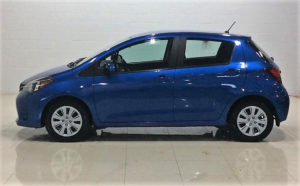
- In those earlier cars, the bolts that secure the front suspension control arms to the frame are prone to corrosion and breakage. Clunking noises from the front end are the giveaway.
- Some owners describe an erratic idle. It appears to be a common issue, but without an obvious cause.
- Later models have the Bluetooth hands-free phone system. Try pairing your phone to the car during your test drive; some owners say they have trouble connecting older smartphones.
- Yaris water pumps are a common failure point. If it fails, count on it to spray engine coolant on the underside of the hood. This is more common in the older generation but was a known issue in a variety of Toyota models through the 2000s.


